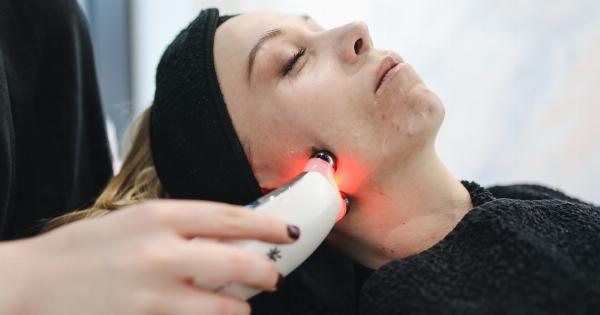Hemorrhoids are a common medical condition that affects millions of people worldwide. They are swollen and inflamed blood vessels in the rectum and anus, causing discomfort, pain, and sometimes bleeding.
Hemorrhoids can be classified into two categories: internal and external. Internal hemorrhoids are located inside the rectum, while external hemorrhoids develop under the skin surrounding the anus.
Causes of Hemorrhoids
There are various factors that can contribute to the development of hemorrhoids, including:.
Poor Diet and Lack of Fiber
A diet low in fiber can lead to constipation, making it harder to pass stools. Straining during bowel movements puts pressure on the rectum and anus, potentially leading to the formation of hemorrhoids.
Consuming a diet rich in fiber can help maintain soft and bulky stools, reducing the risk of hemorrhoids.
Prolonged Sitting or Standing
People who spend long hours sitting or standing without taking breaks are more susceptible to developing hemorrhoids. Continuous pressure on the rectal veins can cause them to become swollen and inflamed.
Taking regular breaks, moving around, and practicing exercises to improve blood circulation can help prevent hemorrhoids.
Pregnancy
During pregnancy, increased pressure on the pelvic region and hormonal changes can contribute to the development of hemorrhoids. The growing uterus puts pressure on the veins, causing them to enlarge.
Pregnant women are also more prone to constipation due to hormonal fluctuations. Taking measures to prevent constipation, such as increasing fiber intake and staying hydrated, can help reduce the risk of hemorrhoids during pregnancy.
Obesity
Obesity is a known risk factor for various health conditions, including hemorrhoids. Excess weight contributes to increased abdominal pressure, which can strain the rectal veins.
Maintaining a healthy weight through regular exercise and a balanced diet can help prevent hemorrhoids.
Chronic Diarrhea or Constipation
Chronic diarrhea or constipation can irritate the rectum and lead to the development of hemorrhoids. Frequent episodes of diarrhea can cause inflammation, while straining during constipation can result in increased pressure on the veins.
Managing these gastrointestinal conditions effectively with proper medical guidance can help reduce the likelihood of hemorrhoids.
Age and Genetics
As people age, the risk of developing hemorrhoids increases. Weakness in the connective tissues that support the veins in the rectum and anus can occur over time, making them more susceptible to swelling and inflammation.
Additionally, a family history of hemorrhoids may predispose individuals to develop the condition.
Symptoms of Hemorrhoids
Hemorrhoids may produce various signs and symptoms, including:.
Rectal Bleeding
Bright red blood in the stool or on toilet paper after wiping is a common symptom of hemorrhoids. The bleeding typically occurs during bowel movements or may be noticed when cleaning the anal area.
Itching and Discomfort
Itching and discomfort in the anal region are common symptoms of hemorrhoids. External hemorrhoids can be particularly itchy and uncomfortable due to the presence of sensitive nerve endings.
Pain and Soreness
Internal hemorrhoids may cause pain and soreness if they protrude through the anus. This can happen during bowel movements or when sitting for extended periods.
External hemorrhoids, on the other hand, can cause pain and discomfort due to the development of blood clots or thrombosis.
Swelling and Inflammation
Both internal and external hemorrhoids can become swollen and inflamed, leading to a visible lump or swelling around the anus. This swelling may cause discomfort or difficulty in performing daily activities.
Protrusion or Prolapse
In severe cases, internal hemorrhoids may prolapse or protrude through the anus. This condition can cause significant discomfort, pain, and difficulty in pushing the hemorrhoids back into place.
Sensitivity and Hygiene Issues
People with hemorrhoids may experience increased sensitivity in the anal region. Maintaining good hygiene can become challenging due to pain and discomfort, potentially leading to additional irritation and complications.
Conclusion
Hemorrhoids are a common medical condition that can cause pain, discomfort, and other distressing symptoms.
Understanding the common causes of hemorrhoids, such as poor diet, prolonged sitting, pregnancy, obesity, chronic diarrhea or constipation, age, and genetics, can help individuals take preventive measures. Recognizing the symptoms of hemorrhoids, including rectal bleeding, itching, discomfort, pain, swelling, and protrusion, is essential for seeking appropriate medical attention and management.
Taking steps to maintain a healthy lifestyle, including a high-fiber diet, regular physical activity, and proper bathroom habits, can help reduce the risk of developing hemorrhoids and promote overall well-being.




























